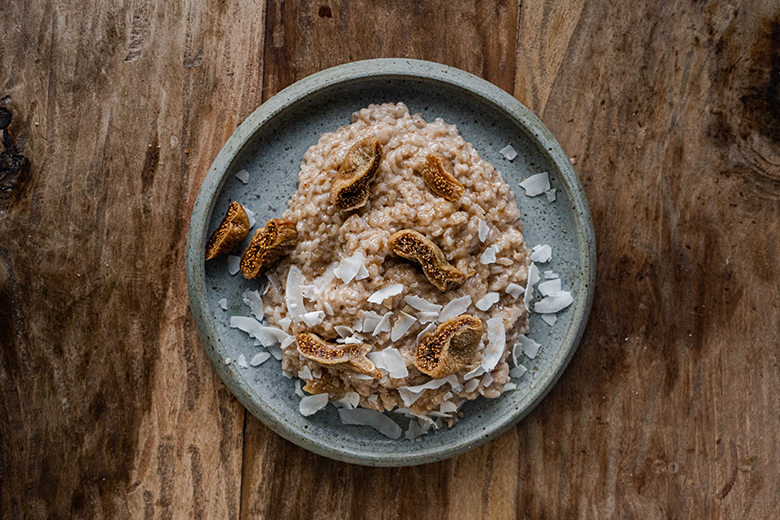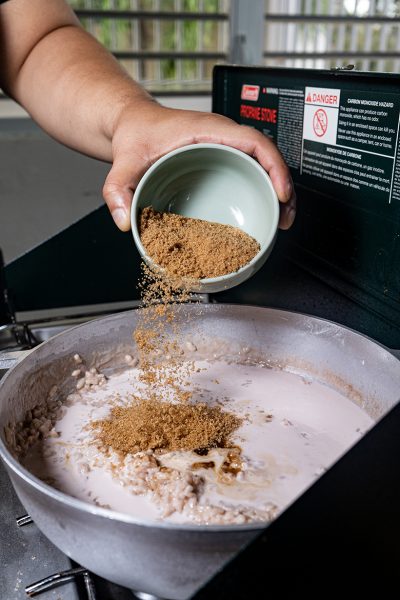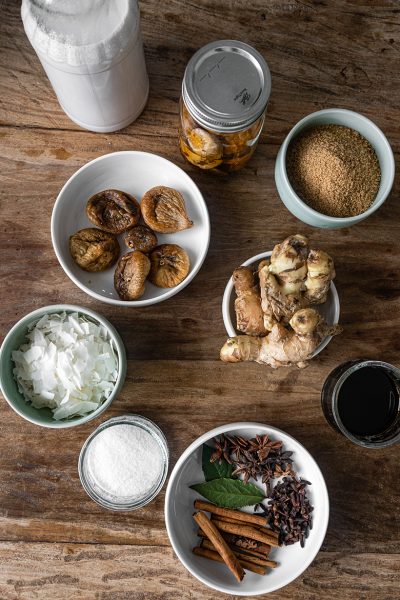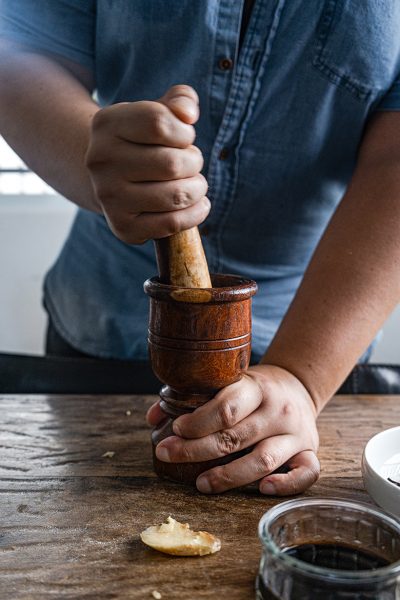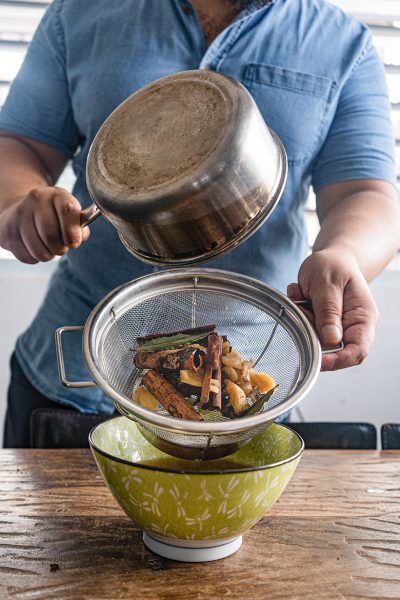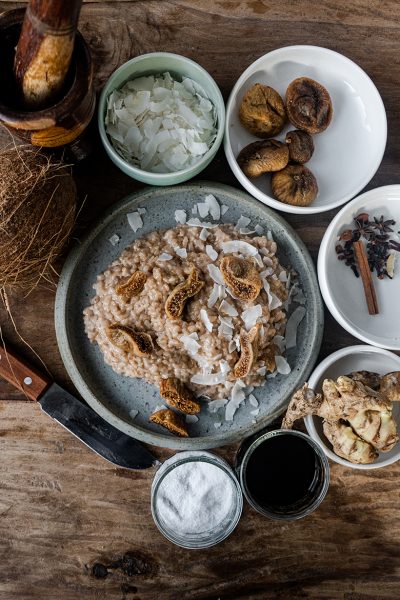
Abuela Nerida arrived to New York City from Santurce, a barrio of San Juan, at the age of three. The second oldest of what would eventually be 12 children, she was one of over 75,000 Puerto Ricans to leave the island during what is now known as “The Great Migration,” and my main connection to Puerto Rico throughout my entire life. Walking through the door to her first-floor Williamsburg, Brooklyn, apartment always instantly transported me to a place far away not only in distance but in time.
Despite never having grown up on the island of Puerto Rico itself, Abuela grew up in the satellite pueblos of the island which at the time were Manhattan, Brooklyn and the Bronx. Trips to La Marqueta, a marketplace in Spanish Harlem reminiscent of those found throughout Latin America, were a weekly event for her and her sisters. Come November, it was the central hub for all of the diaspora’s holiday needs. Banana leaves, green bananas, plantains, yuca, pork and every tropical root vegetable imaginable would leave with families by the cratefuls to be taken home and laboriously processed and folded into pasteles. For the desserts; dried coconuts, sugar, raisins and spices were never too far behind.

Abuela married young. Really young. She met my abuelo, Ramón, in a Fort Greene bodega in the mid-1960s. He wrote his phone number on the back of a Mary Jane wrapper (his favorite candy until this day), and the rest is history. She says she only accepted it because he reminded her of Gilbert Roland, a Mexican movie star from her childhood, but that’s for another time. After a few years in the South Bronx, they eventually settled in Los Sures, a large Puerto Rican community in Williamsburg’s south side.
I, like most other Nuyorican millennials who were lucky enough to have most of their family in New York, spent the holidays at my grandparents’. For Latinos, the big celebration is the evening of Christmas Eve, better known as Nochebuena. The sound of her pilón, a traditional mortar and pestle present in almost every Caribbean kitchen, banging together garlic and herbs for sofrito could be heard from the moment you walked into the building. The smell of pernil roasting and pasteles boiling linger for weeks after the celebrations. However, the greatest smell of all came from dessert.
Much like how sofrito is the base for most Puerto Rican braises, stews and rice dishes; té de especias, spice tea, is how many desserts from the island begin. Ginger, cinnamon, star anise and cloves are simmered until extremely fragrant and the tea has a deep amber color. Abuelo would always sneak a bay leaf in because he said it made it “taste nicer.” That spiced perfume wafting through the hallways of Abuela’s building was always a sign of the season ahead, and if you’re Boricua, it was about to be a long one. No better use existed for té de especias than arroz con dulce.
Similar to the arroz con leche of Spain and much of Latin America, arroz con dulce is a sweet rice pudding made especially around the Christmas season. Instead of cow’s milk, coconut milk is sweetened and spiced with our té and gradually added to short grain rice that’s been soaked for a few hours. Raisins, which are a point of debate for many, are added. Like them or not, I think we can all agree that they’re infinitely better after having taken a bath in rum. I’ve come to find that dried figs soaked in añejo rum work beautifully with the coconut and warm spices. Notably, what is considered arroz con leche in Puerto Rico isn’t sweet at all, but essentially a runny milk and rice soup served when your stomach isn’t feeling too great.

Sitting on a paint-splattered step stool in Nerida’s tiny, windowless Brooklyn kitchen is one of the strongest childhood memories I can recall. Stirring the arroz con dulce in a large aluminum caldero as one of Abuelo’s música jíbara cassettes would play loudly. He’d sing along and have a little too much coquito. “We’re all going to go back one day!” he’d tell me in Spanish, referring to our fantastical return to Puerto Rico as a family when the time is right. They never did go back, but I did.
As I cook out of my Santurce kitchen, I can’t help but feel like everything has come full circle. Some of the things that I grew up with and are so familiar to me, such vital aspects of my identity, have been forgotten here; but that’s changing. Our food traditions of yesteryear are being rethought and reclaimed. The smell of arroz con dulce filling my apartment serving as a reminder that I didn’t come back to Puerto Rico alone after all.

Arroz con Dulce
Serves 8
INGREDIENTS
2 cups short-grain rice
2 cups water
½ cup chopped dried figs
¼ cup añejo rum
2 cups coconut milk
1 tablespoon freshly grated ginger
10 cloves
4 cinnamon sticks
3 star anise
1 bay leaf
1 cup cream of coconut
1 cup of sugar
Freshly grated cinnamon to taste
¼ cup coconut chips or flakes
DIRECTIONS
Soak rice in water for at least 3 hours. Strain and reserve.
Soak figs in rum overnight.
In a large pot, add 2 cups of water, coconut milk, ginger, cloves, cinnamon sticks, anise and bay leaf. Simmer on medium heat for 10 minutes to make spiced tea. Strain and reserve tea.
In a pot, on medium heat, cook the rice with the spiced tea until the liquid reduces meeting the top of the rice.
Cover pot and cook over low heat for 10 minutes, stirring occasionally and assuring that the bottom doesn’t stick.
Add the coconut cream and sugar. Cook until the sugar dissolves and the liquid reduces by half.
Add the figs. Mix well to integrate.
Serve on wide plates or deep bowls. Garnish with freshly grated cinnamon and coconut chips. Serve room temperature or refrigerated.


